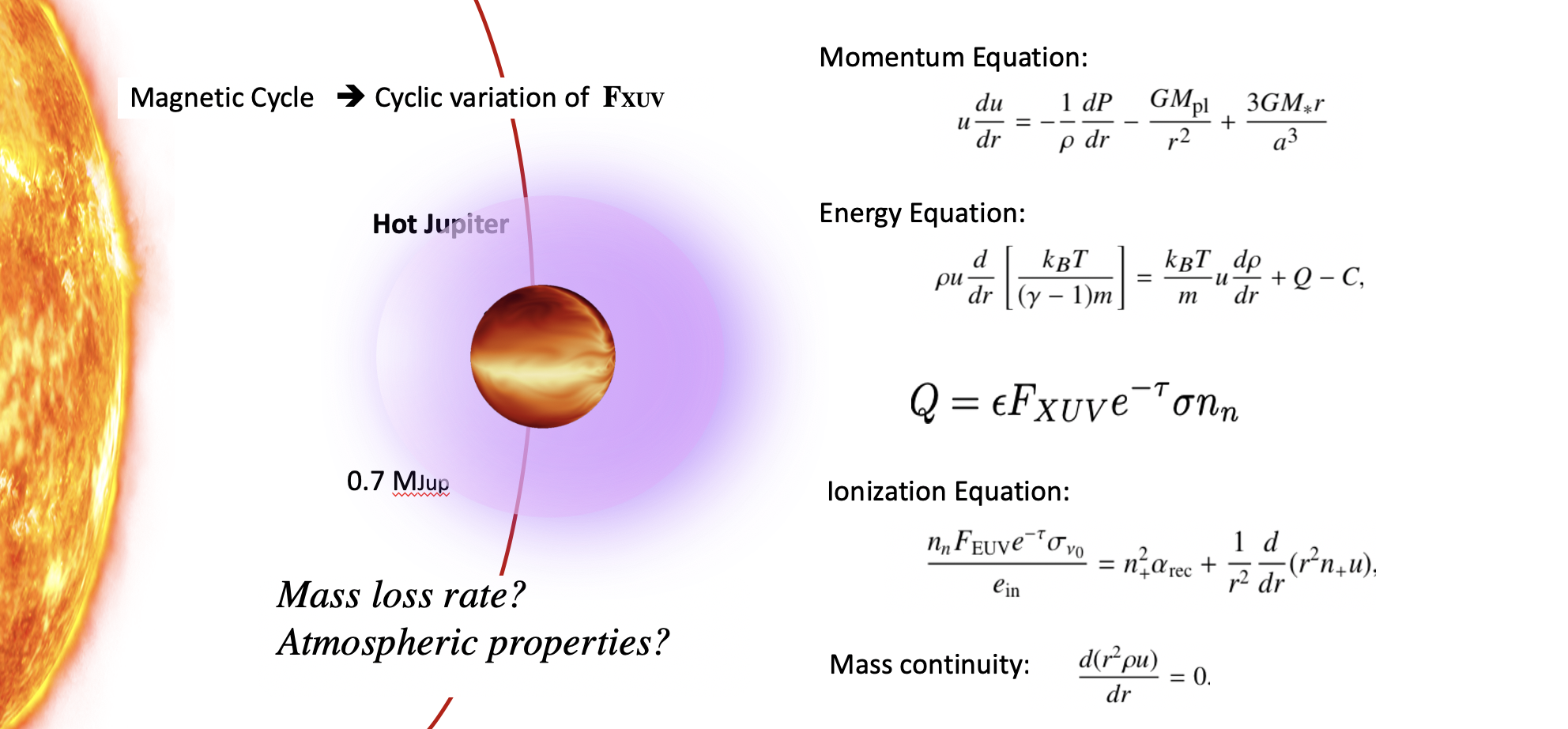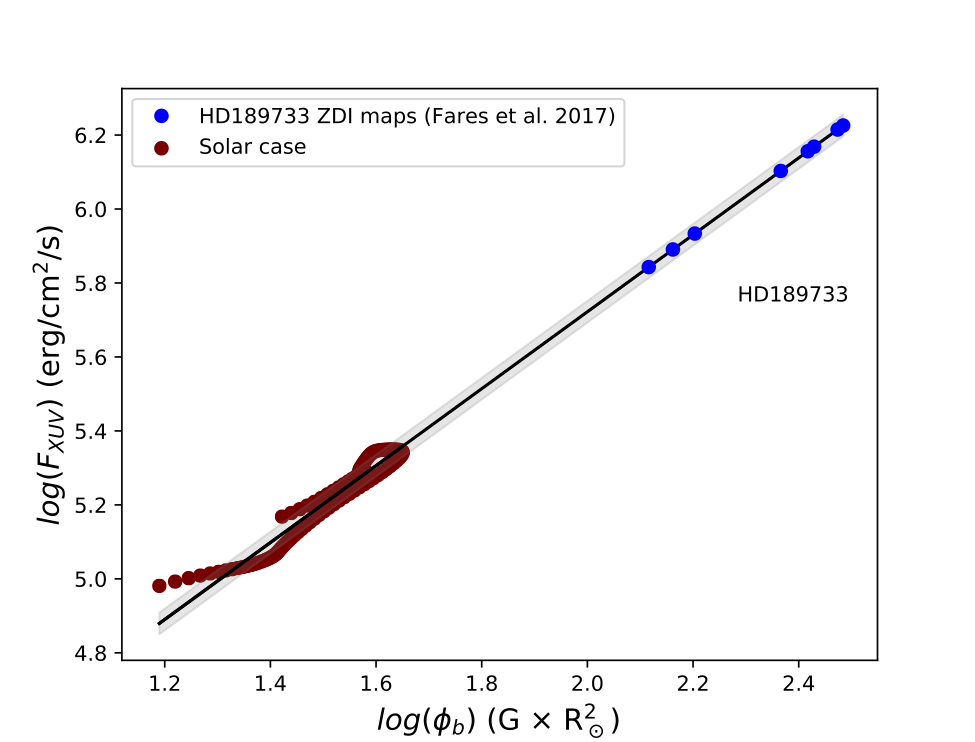Influence of the Sun-like magnetic cycle on exoplanetary Atmospheric escape
Gopal Hazra (Trinity College Dublin), Aline A. Vidotto (Trinity College Dublin), Carolina Villarreal D'Angelo (Observatorio Astronomico de Cordoba (OAC-UNC))
Context
- X-ray and EUV (hence XUV) radiation drives the atmospheric escape on exoplanets due to photoionization.
- This XUV radiation is modulated by the magnetic activity of the host star.
- Most of the planet-hosting stars show magnetic activity and many of them show a magnetic cycle like the Sun.
- Therefore, we study influence of stellar cycle on the XUV radiation and hence on atmospheric escape of exoplanets.
Radiation Hydrodynamic Model of Planetary Escape
We consider a hypothetical system where a hot Jupiter is orbiting our Sun at a = 0.05 AU

Figure 1: Schematic diagram of our model with equations used
XUV radiation (an input in our model) from the Sun over solar cycles 23 and 24.

Figure 2: XUV spectrum of the Sun
Solar XUV radiation is highly correlated with the solar cycle
Planetary atmospheric evaporation over the magnetic cycle
As the Fxuv varies with cycle, we simulate 34 cases covering solar cycle 23-24.

Figure 3: Cyclic behavior of planetary properties
Magnetic field as a probe of XUV radiation for other stars
The solar surface magnetic flux is highly correlated with the XUV flux

Figure 4: Full scale magnetic flux vs XUV flux
For other stars, we can only get large-scale magnetic components (upto lmax = 10)
Is the large-scale component of solar magnetic field also correlated? Yes

Figure 5: Large-scale magnetic flux vs XUV flux
The XUV radiation F xuv ∝ (magnetic flux) 1.04
XUV flux from HD189733
 We calculated XUV fluxes from the star HD189733 using above formula at different epochs (when ZDI observations are available).
We calculated XUV fluxes from the star HD189733 using above formula at different epochs (when ZDI observations are available).
Can we observe the escape variability induced by the magnetic cycle?
Flare case: five times stronger Fxuv from "minimum" magnetic activity

Figure 7: Spectral transit of Lyα and Hα lines over magnetic cycle

